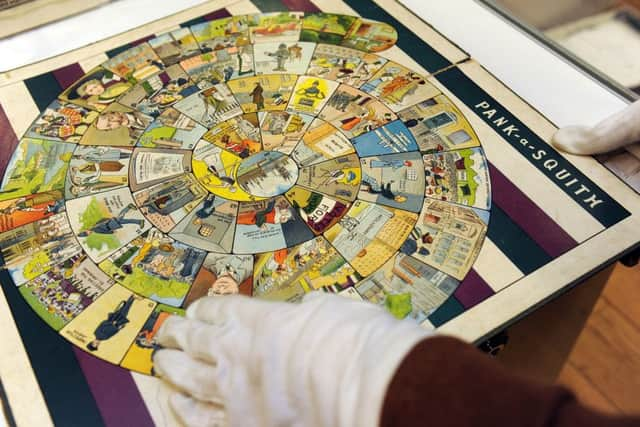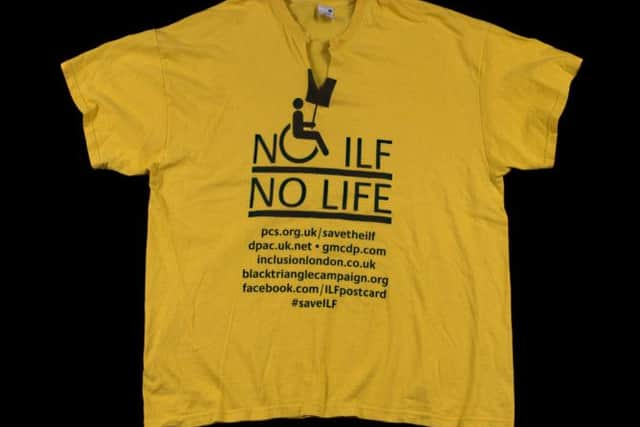new exhibition


Portraits of today’s street tree protesters, banners made by anti-Donald Trump campaigners and DPAC disability rights campaign T-shirts feature alongside exhibits celebrating early fighters such as Chartists and anti-slavery activists.
Curator Louisa Briggs said: “This exhibition came out of Protest Lab at the Millennium Gallery last spring. We asked people about the campaigns that were important to them and what did they like to see in this exhibition. We had thousands of responses.”


Advertisement
Hide AdAdvertisement
Hide AdEvery space at Weston Park is packed with exhibits, which are a mixture of items from Museums Sheffield and other collections and memorabilia loaned or donated by Sheffielders.
A map of Britain is made entirely of campaign badges.
The exhibition is split into three sections, Deeds Not Words, looking at forms of direct action, Subversive Strategies, looking at creativity in getting a message across, and Solidarity, showing groups that have made common cause with others far and near.
There are 38 or so local groups and campaigns represented, from 1970s Chilean refugees and International Brigaders from the Spanish Civil War in the 1930s, to Sheffield’s 1970s Black Panthers and current Black Lives Matter group and generations of peace and anti-war campaigners.


Picasso’s iconic dove, drawn on a visit to a short-lived 1951 peace congress at the City Hall, features in one display.
Advertisement
Hide AdAdvertisement
Hide AdToday’s Sheffield Pride festival is represented alongside city Victorian socialist and gay activist Edward Carpenter.
As well as the 1980s steel strikes and the battles of the miners’ strike and 1990s pit closures, the city’s longest-running battle at engineering firm Keeton’s is recounted.
The exhibition ties in with the current celebration of women beginning to get the vote in February 1918, and looks at militant suffragettes.


A servant’s apron is embroidered with an account from the Sheffield Independent newspaper of suffragette Adela Pankhurst’s 1908 attempt to infiltrate the men-only Cutlers’ Feast dressed as a maid.
Advertisement
Hide AdAdvertisement
Hide AdLouisa said: “We look at key individuals such as Chartist Samuel Holberry and GHB Ward of the Clarion Ramblers who have had a real impact on protest and affected our rights, often at a great personal cost.”
One of the city’s biggest protests was one of the earliest covered, condemning the Peterloo Massacre in Manchester in 1819, when the militia charged into a crowd of more than 60,000 peaceful pro-democracy and anti-poverty protesters, killing at least 18 people and injuring nearly 700.
Louisa said 40-50,000 people gathered at Brocco Bank to show their solidarity with the Manchester victims.


Peterloo is the subject of a new film starring Maxine Peake.
Advertisement
Hide AdAdvertisement
Hide AdOne poignant item on display comes from Chilean refugees living in Sheffield who fled the right-wing dictatorship of General Pinochet that killed many thousands of opponents. A quilt is made up of panels created by refugees.
Louisa said that when political gatherings were banned, people held quilting groups in churches, using any materials they had, including cloth from the belongings of loved ones who had disappeared.
One example of international solidarity tucked away in a corner of the International Brigade display shows a newspaper photograph of Basque refugees who were rehomed in Froggatt.
Boys from Firth Park Secondary School are seen greeting the refugees in Spanish.
Advertisement
Hide AdAdvertisement
Hide AdLouisa said anyone who has ephemera from campaigns they want to donate can contact Museums Sheffield for the social history collection.
Changing Lives: 200 Years of People and Protest in Sheffield runs until July 1. Entry is free.